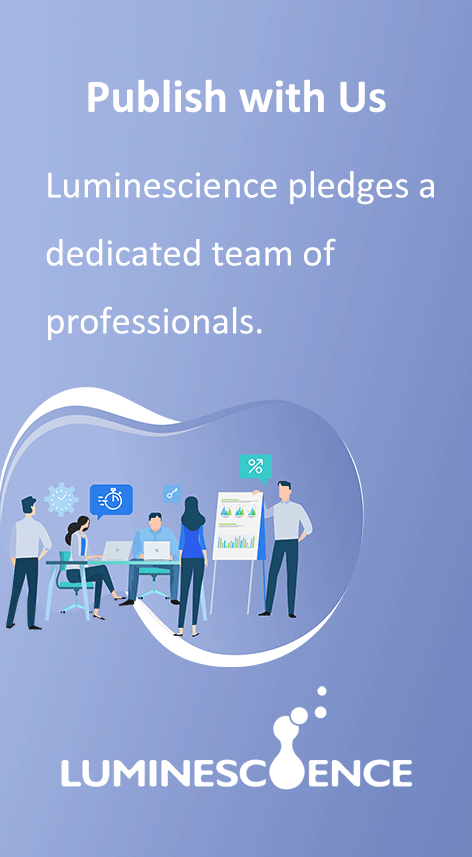Maria Ablameyko 1 , Sergey Ablameyko 2
Correspondence: m.ablameyko@mail.ru
DOI: https://doi.org/10.55976/jdh.22023113912-21
Show More
[1]M.Ablameyko, N,Shakel, Dao Van Tuyet. Artificial intelligence in smart healthcare: legal aspects. Ho Chi Minh City, Vietnam, Thanh Nien Publishing House. 2021, p.174.
[2]Victor Chang, Yi Cao, Taiyu Li, Yujie Shi and Patricia Baudier. Smart Healthcare and Ethical Issues. In International Conference on Finance, Economics, Management and IT Business. 2019, p.53-59. doi: 10.5220/0007737200530059.
[3]Cindy Candrian, Anne Scherer, Rise of the machines: Delegating decisions to autonomous AI. Computers in Human Behavior. 2022; 134, 107308, Available from: https://doi.org/10.1016/j.chb.2022.107308.
[4]Francisco Maria Calisto, Carlos Santiago, Nuno Nunes, Jacinto C. Nascimento, Breast Screening-AI: Evaluating medical intelligent agents for human-AI interactions. Artificial Intelligence in Medicine. 2022; 127. Available from: https://doi.org/10.1016/j.artmed.2022.102285.
[5]A.J. London, Artificial intelligence and black-box medical decisions: accuracy versus explainability. The Hastings Center Report. 2019; 49, 15-21. doi: 10.1002/hast.973.
[6]Sarwar, S., Dent, A., Faust, K. et al. Physician perspectives on integration of artificial intelligence into diagnostic pathology. Digital. Medicine. 2019; 28(2). https://doi.org/10.1038/s41746-019-0106-0.
[7]Paul Formosa, Wendy Rogers, Yannick Griep, Sarah Bankins, Deborah Richards, Medical AI and human dignity: Contrasting perceptions of human and artificially intelligent (AI) decision making in diagnostic and medical resource allocation contexts. Computers in Human Behavior. 2022; 133. https://doi.org/10.1016/j.chb.2022.107296.
[8]Francisco Maria Calisto, Carlos Santiago, Nuno Nunes, Jacinto C. Nascimento. Introduction of human-centric AI assistant to aid radiologists for multimodal breast image classification. International Journal of Human-Computer Studies. 2021; 150. https://doi.org/10.1016/j.ijhcs.2021.102607.
[9]Yogesh Kumar, Apeksha Koul, Ruchi Singla, and Muhammad Fazal Ijaz. Artificial intelligence in disease diagnosis: a systematic literature review, synthesizing framework and future research agenda. Journal of Ambient Intelligence and Humanized Computing. 2022; 1-28. doi: 10.1007/s12652-021-03612-z.
[10]X. Liu, et al. A comparison of deep learning performance against health-care professionals in detecting diseases from medical imaging: a systematic review and meta-analysis. Lancet Digital Health. 2019; 1; 271-297. doi: https://doi.org/10.1016/S2589-7500(19)30123-2.
[11]China: AI medical imaging industry market size 2018-2022. Statistics Available online: https://www.statista.com/statistics/1024843/china-ai-medical-imaging-industry-market-size/ (accessed on Jun 15, 2021).
[12]Overview of Russian Artificial Intelligence Systems for Healthcare. Available from: https://webiomed.ru/blog/obzor-rossiiskikh-sistem-iskusstvennogo-intellekta-dlia-zdravookhraneniia/.
[13]Stands in the field of artificial intelligence in healthcare. Available from: https://zdrav.expert/index.php [Accessed 19th December 2022].
[14]Yoon, H.J.; Jeong, Y.J.; Kang, H.; Jeong, J.E.; Kang, D.-Y. Medical Image Analysis Using Artificial Intelligence. Progress in Medical Physics. 2019; 30(2) 49-58. doi:10.14316/pmp.2019.30.2.49.
[15]Artificial intelligence in medicine: areas, technologies and prospects. Available from: https://habr.com/ru/companies/first/articles/682516/ [Accessed 19th December 2022].
[16]Jiang, Y.; Yang, M.; Wang, S.; Li, X.; Sun, Y. Emerging role of deep learning-based artificial intelligence in tumour pathology. Cancer Communications. 2020; 40, 154-166. doi: https://doi.org/10.1002/cac2.12012.
[17]Ablameyko S., Nedzved A., Belotserkovsky A. Computer systems of histology image analysis in Belarus. Annual Proceeding of Medical Science. Bialystok, Poland, 2005; 50(2). 23-26.
[18]Nedzved, A. M., Ablameyko, S. V, Nalibotsky, B.V., Ilyich, Yu. G. System of analysis of medical images of histological objects. Pattern Recognition and Image Analysis. 2001; 11(4), 732-742.
[19]I. B. Gurevich, V. V. Yashina, S. V. Ablameyko, A. M. Nedzved, A. M. Ospanov, A.T. Tleubaev, A. A. Fedorov, and N. A. Fedoruk. Development and Experimental Investigation of Mathematical Methods for Automating the Diagnostics and Analysis of Ophthalmological Images. Pattern Recognition and Image Analysis. 2018; 28(4), 756-780. doi: https://doi.org/10.1134/S1054661818040120.
[20]Shiping Ye, Alexander Nedzvedz, Fangfang Ye, Sergey Ablameyko. Segmentation and feature extraction of endoscopic images for making diagnosis of acute appendicitis. Pattern Recognition and Image Analysis. 2019; 29(4),738-749. doi: https://doi.org/10.1134/S1054661819040205.
[21]Chen, H., Nedzvedz, O.V., Ye, S. Nedzvedz A.M., Ablameyko S.V. Сell Population Dynamics Monitoring in Video Based on Integral Optical Flow and Motion Maps. Journal of Applied Spectroscopy. 2020; 87(5), 853-864. doi: https://doi.org/10.1007/s10812-020-01081-4.
[22]H. Chen, O.Nedzvedz, S.Ye, A.Nedzvedz, S.Ablameyko. Wound Healing Monitoring by Video Sequence Using Integral Optical Flow. Journal of Applied Spectroscopy. 2019; 86(3), 435-442. doi: https://doi.org/10.1007/s10812-019-00838-w.
[23]Huang S, Yang J, Fong S, Zhao F. Artificial intelligence in cancer diagnosis and prognosis. Cancer Letters. 2020;471:61-71. doi: 10.1016/j.canlet.2019.12.007.
[24]CEPEJ European Ethical Charter on the use of artificial intelligence (AI) in judicial systems and their environment. https://www.coe.int/en/web/cepej/cepej-european-ethical-charter-on-the-use-of-artificial-intelligence-ai-in-judicial-systems-and-their-environment [Accessed 19th December 2022].
[25]National standard of the Russian Federation. Artificial Intelligence systems in clinical medicine https://gostassistent.ru/doc/4f1d3707-3197-4a10-81b0-94048ea72237 [Accessed 19th December 2022].
[26]Applying ethical principles for artificial intelligence and autonomous systems in regulatory reform. Singapore Academy of Law, Law Reform Committee; edited by Simon Constantine. https://www.sal.org.sg/Resources-Tools/Law-Reform/Law-Reform-e-Archive.
[27]Charles Kerrgan. Artificial Intelligence. Law and Regulation. Edward Elgar Publishing, doi: http://dx.doi.org/10.4337/9781800371729.
[28]M. Ablameyko, N. Shakel. Doctor-Patient-Artificial Intelligence Relations in Smart Healthcare. Biomedical Journal of Science & Technology Research. 2022; 44(5). doi: 10.26717/BJSTR.2022.44.007128.
[29]Molnár-Gabor. Artificial Intelligence in Healthcare: Doctors, Patients and Liabilities, in Wischmeyer, Rademacher (eds). Regulating Artificial Intelligence. 2020; 337. doi:10.1007/978-3-030-32361-5_15
[30]Sherlock in Health. How artificial may improve quality and efficient, whilst reducing healthcare costs in Europe. 2017. https://www.pwc.de/de/gesundheitswesen-und-pharma/studie-sherlock-in-health.pdf.
[31]H.van Kolfschooten. EU Regulation of Artificial Intelligence: Challenges for patients’ rights. Common Market Law Review. 2022; 59(1), 81-112. doi: http://dx.doi.org/10.2139/ssrn.3997366.
Copyright © 2023 Maria Ablameyko, Sergey Ablameyko

This work is licensed under a Creative Commons Attribution 4.0 International License.
Copyright licenses detail the rights for publication, distribution, and use of research. Open Access articles published by Luminescience do not require transfer of copyright, as the copyright remains with the author. In opting for open access, the author(s) should agree to publish the article under the CC BY license (Creative Commons Attribution 4.0 International License). The CC BY license allows for maximum dissemination and re-use of open access materials and is preferred by many research funding bodies. Under this license, users are free to share (copy, distribute and transmit) and remix (adapt) the contribution, including for commercial purposes, providing they attribute the contribution in the manner specified by the author or licensor.


Luminescience press is based in Hong Kong with offices in Wuhan, China.
E-mail: publisher@luminescience.cn